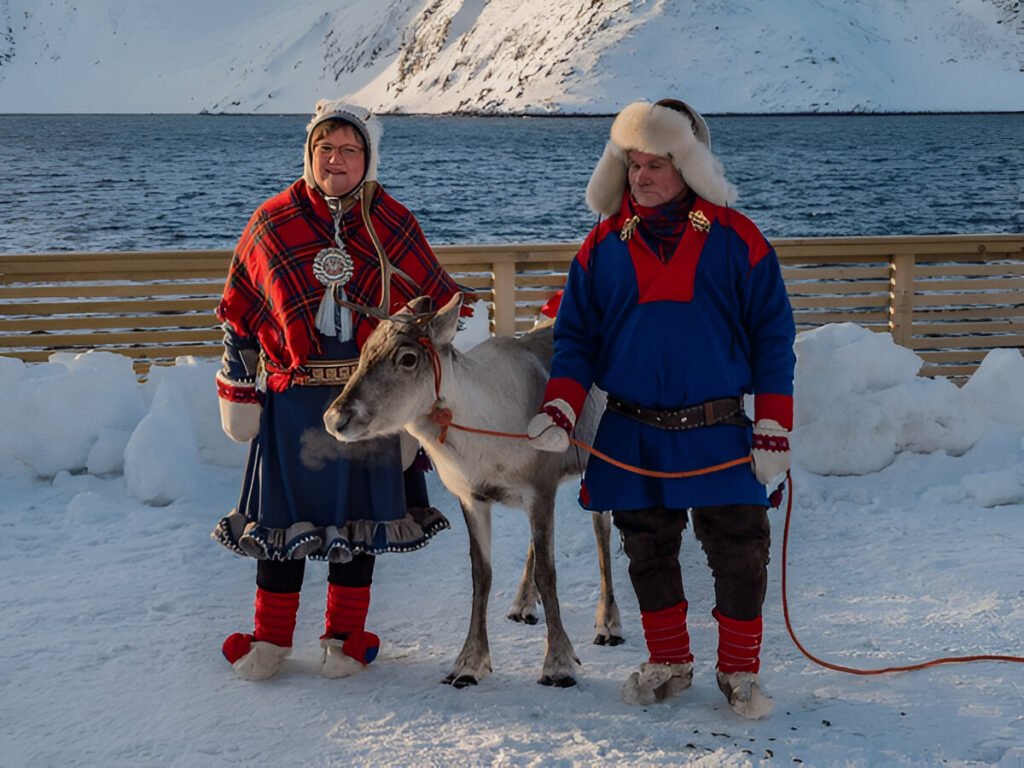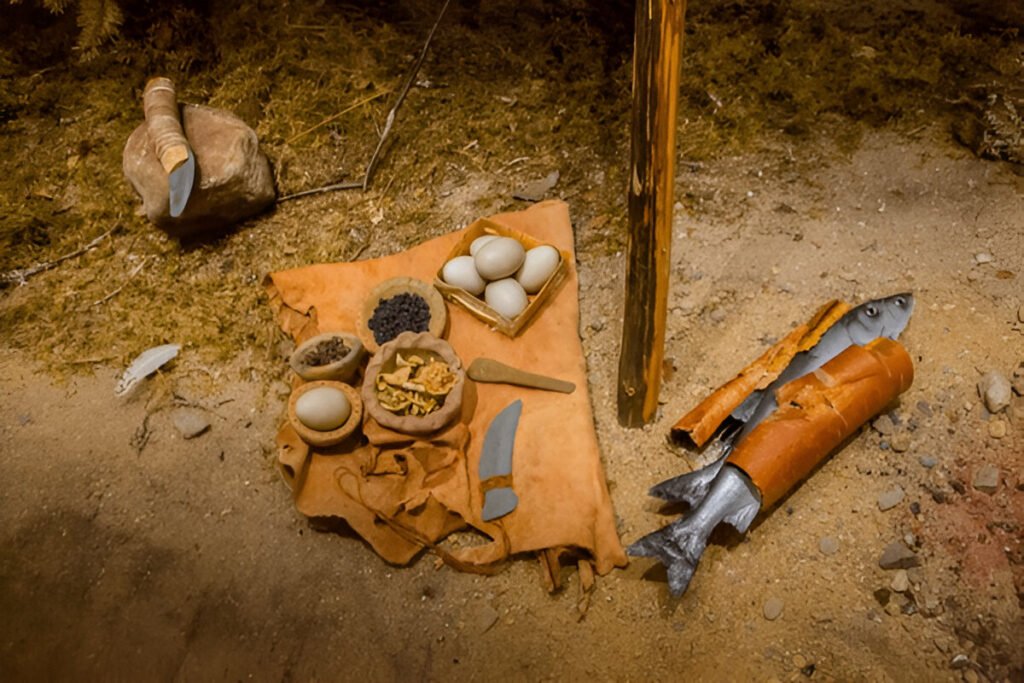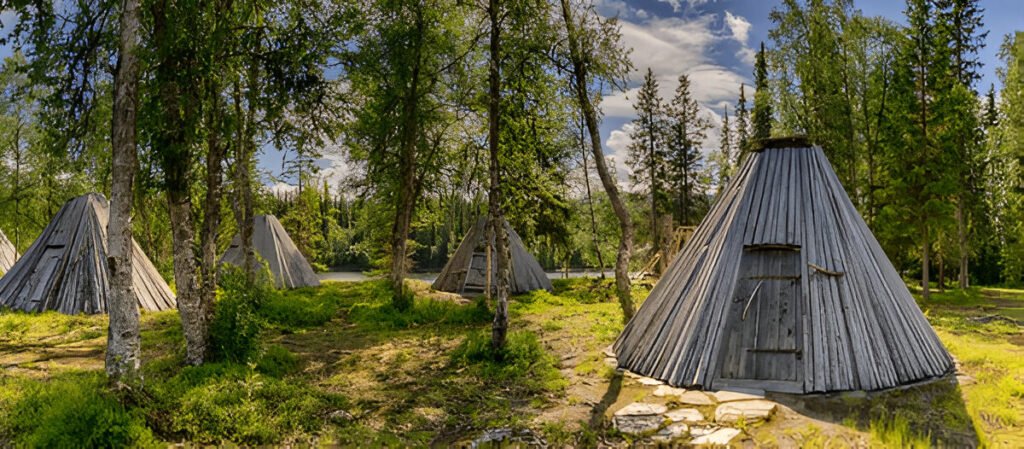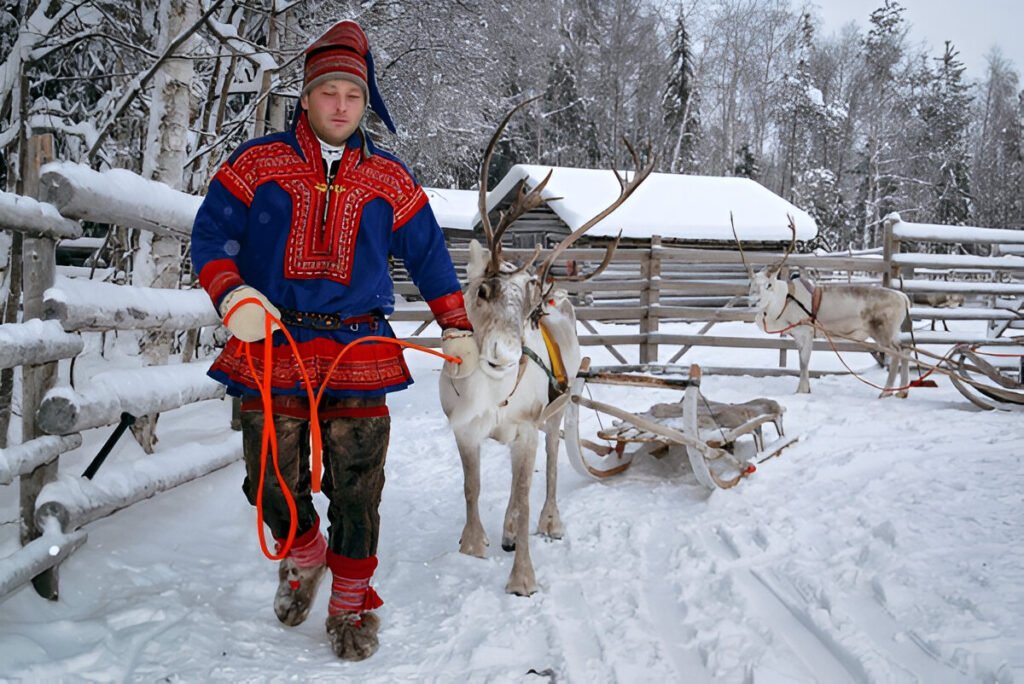Introduction
Nestled in the Arctic regions of Norway, Sweden, Finland, and the Kola Peninsula in Russia, the Sami people are one of Europe’s oldest indigenous communities. With a history spanning thousands of years, they have managed to preserve their unique cultural heritage, language, and traditions despite numerous challenges. Sami culture is deeply intertwined with nature, emphasizing harmony with the environment and the practice of sustainable living.
In this blog, we explore the fascinating world of the Sami people, delving into their traditions, livelihoods, and the significance of their contributions to Scandinavian heritage.
1. Who Are the Sami?

The Sami people are the indigenous inhabitants of the Sápmi region, which stretches across northern Norway, Sweden, Finland, and Russia. Estimates suggest there are around 80,000–100,000 Sami today, with the largest populations in Norway.
- Language:
The Sami speak several dialects of the Sami language, which is part of the Finno-Ugric language family. Despite efforts to preserve it, many dialects are endangered.
- Flag and Symbolism:
The Sami flag, featuring vibrant colors and a circular symbol, represents their connection to nature, the sun, and the moon.
2. Traditional Sami Lifestyle

Historically, the Sami people were semi-nomadic, with livelihoods revolving around reindeer herding, fishing, and hunting. Although modern life has brought changes, many Sami continue to practice these traditions.
- Reindeer Herding:
Reindeer herding is central to Sami culture, both as a livelihood and a symbol of their identity. The herding process involves guiding large herds across vast Arctic landscapes, a practice passed down through generations.
- Fishing and Hunting:
In addition to reindeer herding, the Sami traditionally relied on fishing in Arctic rivers and hunting for sustenance. These practices remain integral to their connection with the land.
Pro Tip: If you visit Sápmi, take a guided tour with Sami herders to learn about their reindeer traditions firsthand.
3. Sami Joik: A Unique Musical Tradition
The Sami people have a distinctive musical tradition called joik, one of Europe’s oldest forms of musical expression.
- What is Joik?
Joik is a form of vocal expression used to convey emotions, stories, or the essence of a person, animal, or place. Each joik is unique and deeply personal.
- Modern Influence:
Today, Sami artists like Mari Boine and Jon Henrik Fjällgren blend joik with contemporary music styles, gaining global recognition.
Pro Tip: Attend a Sami festival or cultural event to experience live joik performances.
4. Sami Festivals and Celebrations
Festivals are an integral part of Sami culture, celebrating their traditions and fostering community spirit.
- Sami National Day (February 6th):
This day commemorates the first Sami congress held in 1917. Celebrations include traditional music, joik, colorful costumes, and cultural exhibitions.
- Easter Festival in Kautokeino (Norway):
One of the largest Sami festivals, this event features reindeer racing, music, and traditional Sami games.
- Riddu Riđđu Festival (Norway):
A celebration of indigenous cultures worldwide, this festival highlights Sami traditions through music, art, and storytelling.
Pro Tip: Plan your visit around these festivals to experience the vibrant energy of Sami culture.
5. Sami Cuisine: A Taste of Tradition
Sami cuisine reflects their deep connection to the Arctic environment, focusing on locally sourced, sustainable ingredients.
- Reindeer Meat:
A staple in Sami cuisine, reindeer meat is often prepared as stew (bidos), smoked, or dried. It’s a hearty dish that sustains herders through harsh winters.
- Fish Dishes:
Arctic char and salmon are commonly used in traditional recipes. Smoked fish is a popular delicacy.
- Berries and Herbs:
Wild berries like cloudberries and lingonberries, along with Arctic herbs, are used to create jams, teas, and desserts.
Pro Tip: Visit a Sami restaurant or food stall during a festival to sample these authentic dishes.
6. Sami Handicrafts: The Art of Duodji

Duodji is the Sami term for their traditional handicrafts, a practice that blends functionality and artistry.
- Reindeer Antler Crafts:
Items like knives, jewelry, and tools are made from reindeer antlers, showcasing intricate designs.
- Textiles:
Sami artisans create beautiful textiles, including woolen scarves, embroidered belts, and decorative bands.
- Gákti:
The Sami traditional dress, known as gákti, is worn during festivals and ceremonies. Its design and colors often indicate the wearer’s region and family heritage.
Pro Tip: Purchase authentic Sami handicrafts from local artisans to support their community and preserve their traditions.
7. Sami Connection to Nature
The Sami have a profound spiritual connection to the natural world, rooted in animism and shamanistic beliefs.
- Sacred Sites:
Certain mountains, lakes, and groves are considered sacred in Sami culture. These sites are often used for rituals and ceremonies.
- Seasonal Living:
The Sami lifestyle follows the rhythm of the Arctic seasons, adapting to the changing environment.
Pro Tip: Respect Sami traditions and their connection to the land by following local guidelines when visiting sacred sites.
8. Challenges Faced by the Sami People

Despite their rich culture, the Sami have faced numerous challenges over the years:
- Colonization and Assimilation:
Policies in the past aimed to assimilate the Sami into dominant cultures, leading to loss of language and traditions.
- Climate Change:
Rising temperatures threaten the Arctic environment, impacting reindeer migration patterns and traditional ways of life.
- Land Rights:
Disputes over land use, such as mining and wind farm development, continue to affect Sami communities.
Efforts are ongoing to protect Sami rights and ensure the preservation of their culture for future generations.
9. Experiencing Sami Culture as a Visitor
If you’re planning a trip to the Arctic regions of Scandinavia, there are several ways to immerse yourself in Sami culture:
- Sami Villages:
Visit villages like Karasjok and Kautokeino in Norway or Jokkmokk in Sweden to learn about Sami traditions.
- Museums:
Sámiid Vuorká-Dávvirat Museum (Karasjok, Norway): A treasure trove of Sami artifacts.
Ájtte Museum (Jokkmokk, Sweden): Focuses on Sami culture and Arctic ecology.
- Guided Tours:
Join a Sami-guided tour to learn about reindeer herding, joik, and local folklore.
Pro Tip: Be respectful of Sami traditions and ask questions to gain a deeper understanding of their culture.
10. Preserving Sami Heritage

The preservation of Sami culture is vital to maintaining the diversity of Scandinavia’s cultural landscape. Initiatives include:
- Education Programs:
Schools in the Sápmi region teach the Sami language and history to ensure its survival.
- Cultural Festivals:
Events like Riddu Riđđu and Sami National Day raise awareness and appreciation for Sami traditions.
- Collaboration:
Partnerships between Sami communities and governments focus on protecting land rights and promoting sustainable development.
Pro Tip: Support these efforts by visiting Sami cultural centers and advocating for indigenous rights.
Conclusion
Exploring Sami culture offers a glimpse into a way of life that has thrived in harmony with nature for centuries. From their vibrant festivals and traditional crafts to their profound connection to the Arctic environment, the Sami people provide an enriching cultural experience for visitors.
By learning about and supporting Sami traditions, we contribute to the preservation of this unique heritage, ensuring that future generations can appreciate the beauty and resilience of the Sami people.











